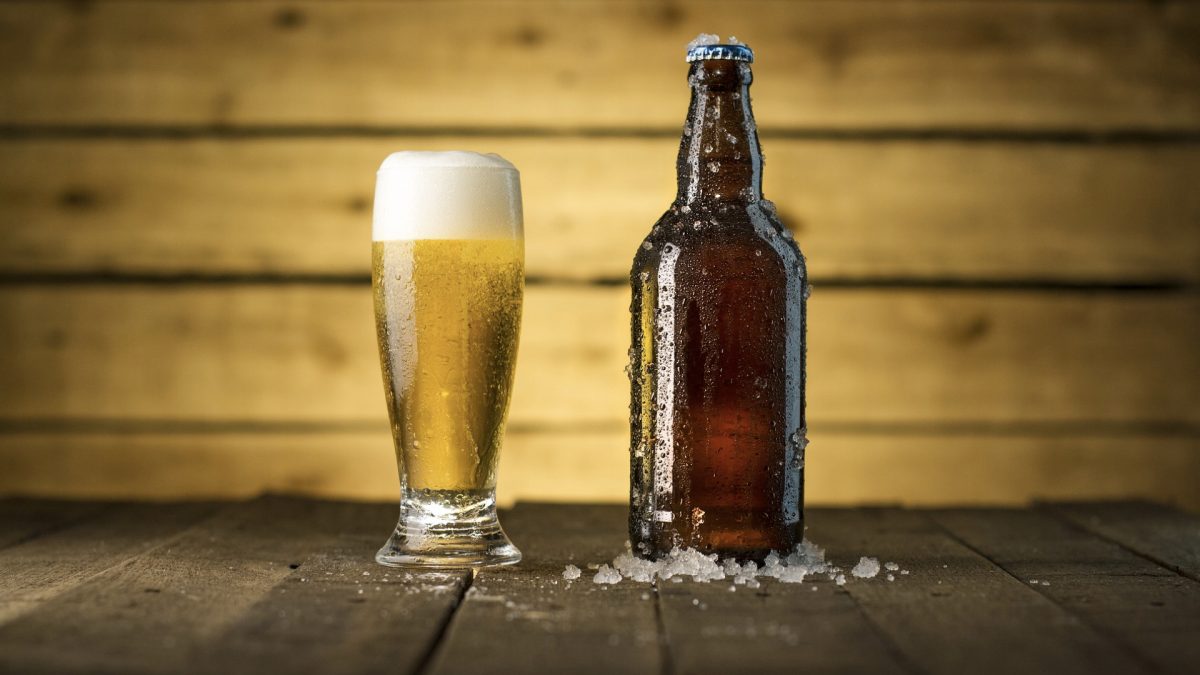Hops have been used for centuries as a flavoring agent in beer, but “[o]ver the years, a recurring suggestion has been that hops”—and therefore beer—may be estrogenic, thanks to a potent phytoestrogen in hops called 8-PN, also known as hopein. Might beer drinking affect our hormones? I discuss this in my video What Are the Effects of the Hops Phytoestrogen in Beer?.
Even just the alcohol in beer can reduce testosterone levels in men, so when beer was tested as a source of estrogens, the alcohol was first removed. Researchers tested the equivalent of one can of beer every day for a month on the hormone levels of postmenopausal women, so as to not confound the results with her own estrogens, and they found significant alterations of hormonal levels during the beer month and then a return to baseline a week afterwards. But does this have any clinical effects, whether good or bad?
A cross-sectional study of about 1,700 women found that beer drinkers appear to have better bone density, perhaps because of the pro-estrogenic effects. They don’t recommend women start drinking beer for bone health, but suggest it may have beneficial bone effects for women who already drink.
What about helping with hot flashes? About half of postmenopausal and premenopausal women in the United States suffer from hot flashes, whereas the prevalence in Japan may be ten times lower, presumed to be because of their soy consumption. What about hops? There have been a few studies showing potential benefit, leading to a 2013 review suggesting that “hop extract may be somewhat effective in treating menopausal discomforts especially against hot flushes,” but that was before a study reported extraordinary results with about a half teaspoon of dried hop flowers. In the placebo group, the women started out having 23 hot flashes a week and continued to have 23 hot flashes a week throughout the three-month study. In the hops group, the women started out even worse with about 29 hot flashes a week, but then got down to 19 at the end of the first month, then 9, and finally just 1 hot flash a week. And similar findings were reported for all the other menopausal symptoms measured.
Animal estrogens work, too. Millions of women used to be on horse hormones—Premarin, from pregnant mares’ urine. That drug also took care of hot flashes, as well as curtailed osteoporosis, but caused a pesky little side effect called breast cancer. Thankfully, when this was realized and millions of women stopped taking it, breast cancer rates fell in countries around the world.
The question, then, is: Are the estrogens in hops more like the breast cancer-promoting horse estrogens or the breast cancer-preventing soy estrogens? The key to understanding the health-protective potential of soy phytoestrogens is understanding the difference between the two types of estrogen receptors, alpha receptors and beta receptors. Unlike animal estrogen, the soy phytoestrogens bind preferentially to the beta receptors, and in breast tissue, they’re like yin and yang with the alpha receptors signaling breast cell proliferation. This explains why horse hormones increase breast cancer risk, whereas the beta receptors, where the soy binds, oppose that proliferative impact. So, do the hops phytoestrogens prefer beta, too? No. 8-PN is a selective estrogen receptor alpha promoter. “Surprisingly and in clear contrast to genistein [the soy], 8-PN is a much weaker” binder of beta than of alpha. So, that explains why hops is such a common ingredient in so-called breast enhancing supplements—that is, because it acts more like estrogen estrogen. Given the breast cancer concerns, use of such products should be discouraged, but just drinking beer could provide the exposure to the hops estrogen, which could help explain why beer may be more carcinogenic to the breast than some other forms of alcohol.
A phytoestrogen in beer? For more on the background of this issue, see The Most Potent Phytoestrogen Is in Beer.
Other videos on phytoestrogen include:
- BRCA Breast Cancer Genes and Soy
- Flaxseeds and Breast Cancer Survival: Epidemiological Evidence
- Can Flaxseeds Help Prevent Breast Cancer?
- Flaxseeds and Breast Cancer Survival: Clinical Evidence
- Who Shouldn’t Eat Soy?
- Is Soy Healthy for Breast Cancer Survivors?
- Should Women at High Risk for Breast Cancer Avoid Soy?
- How to Block Breast Cancer’s Estrogen-Producing Enzymes
- Soy Phytoestrogens for Menopause Hot Flashes
To learn more about dietary effects on testosterone, see:
- Alkylphenol Endocrine Disruptors and Allergies
- Enhancing Athletic Performance with Peppermint
- Dietary Pollutants May Affect Testosterone Levels
- Avoiding Adult Exposure to Phthalates
What about “natural” hormones for menopause? See my video Plant-Based Bioidentical Hormones.
For more on the risks of alcohol in terms of breast cancer risk, see Breast Cancer and Alcohol: How Much Is Safe? and Breast Cancer Risk: Red Wine vs. White Wine.
In health,
Michael Greger, M.D.
PS: If you haven’t yet, you can subscribe to my free videos here and watch my live, year-in-review presentations:
- 2012: Uprooting the Leading Causes of Death
- 2013: More Than an Apple a Day
- 2014: From Table to Able: Combating Disabling Diseases with Food
- 2015: Food as Medicine: Preventing and Treating the Most Dreaded Diseases with Diet
- 2016: How Not To Die: The Role of Diet in Preventing, Arresting, and Reversing Our Top 15 Killers
